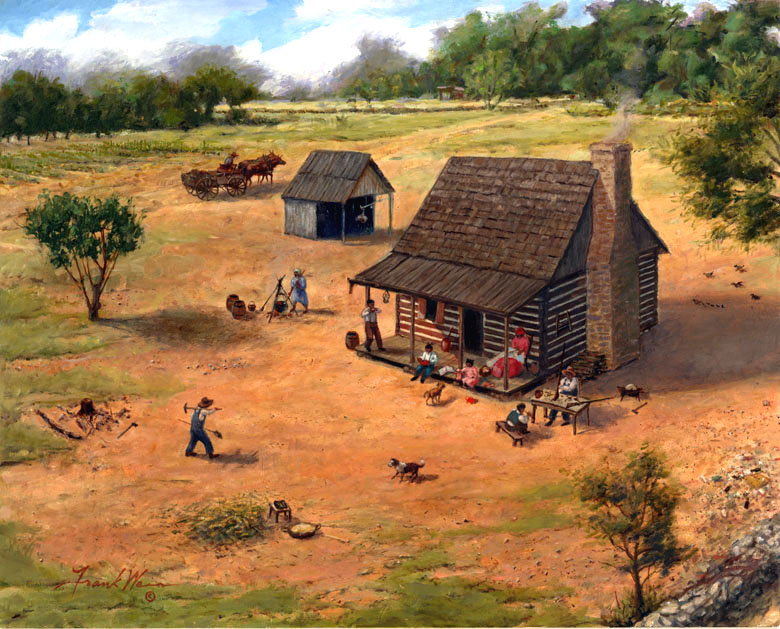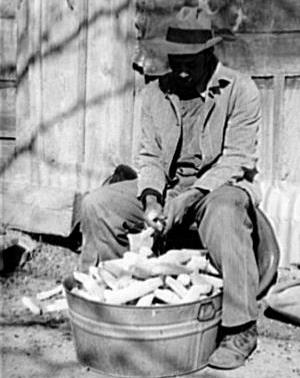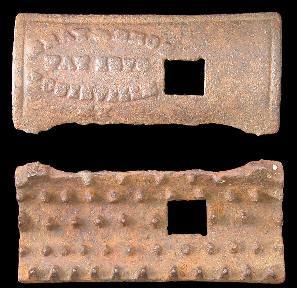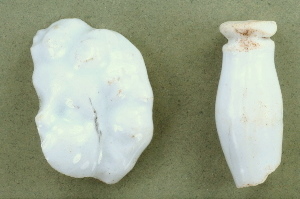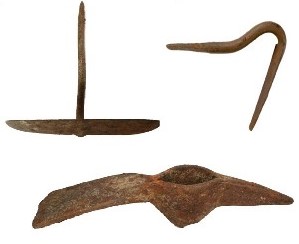Around the Cabin and Fields
|
Many modern Texans spend most of their time indoors, but this was not the case for rural farm families in the late nineteenth century. Families in those days tended to be very large, and the houses were relatively small, particularly by today’s standards. Consequently, most activities took place outside whenever the weather allowed. In this painting, the Williams family is gathering around their house at the end of a workday as the sun falls low on the horizon. It is springtime, and the vegetable garden is growing well. Oldest son Will is returning from a trip in the wagon, heading north toward the corral area to turn the mules loose with the rest of the horses. He is going past the workshop where they repair the wagons, barrels, and farm equipment, and an old cotton scale hangs from the eve. The house is a log cabin that faces south so its doorway is protected from the cold north wind. It has a well-built rock chimney on its east side, and a bucksaw hangs on the cabin wall. A fire has been lit in the fireplace to warm the cabin interior in anticipation of a cool night. To the east of the cabin is the household trash dump next to a low rock wall that marks the edge of an old road, and several chickens are running behind the house. Activities that tend to create a mess, such as log splitting, are consigned to the periphery of the yard. An axe lies next to a tree stump where they chop up firewood, and a hand-held corn sheller sits on a small table next to a pile of shucks. The iron pan is full of shelled dry corn from last year’s harvest that will be used to make cornbread. Just west of the cabin, the oldest daughter, Mary, is cooking a stew for dinner in a large cast iron pot suspended on a tripod over a fire. Two empty water barrels and a small metal pail full of vegetables and spices sits nearby. A lot of activities are taking place on the front porch. Henry is trying to play the harmonica, while his younger brother John looks at a picture book and little sister Emma plays with her dolls. Sarah is sitting in her rocking chair nearby, watching the kids and working on her patchwork quilt. Other items depicted on the porch or cabin walls are a kerosene lantern, a stoneware jar, and butter churn. Near the porch, where he can carry on a conversation with Sarah, Ransom sits at a table smoking his pipe and repairing an old Civil War surplus Enfield rifle. The young boy sitting nearby, watching and whittling on a stick with his pocketknife, is Ransom’s nephew, who lives in the nearby Antioch Colony freedmen community but is visiting the farm for a few days. An interactive version of the farm scene, showing additional artifacts on which the painting is based, may be viewed at Kids: Discover a 19th-Century Farm. |
|
